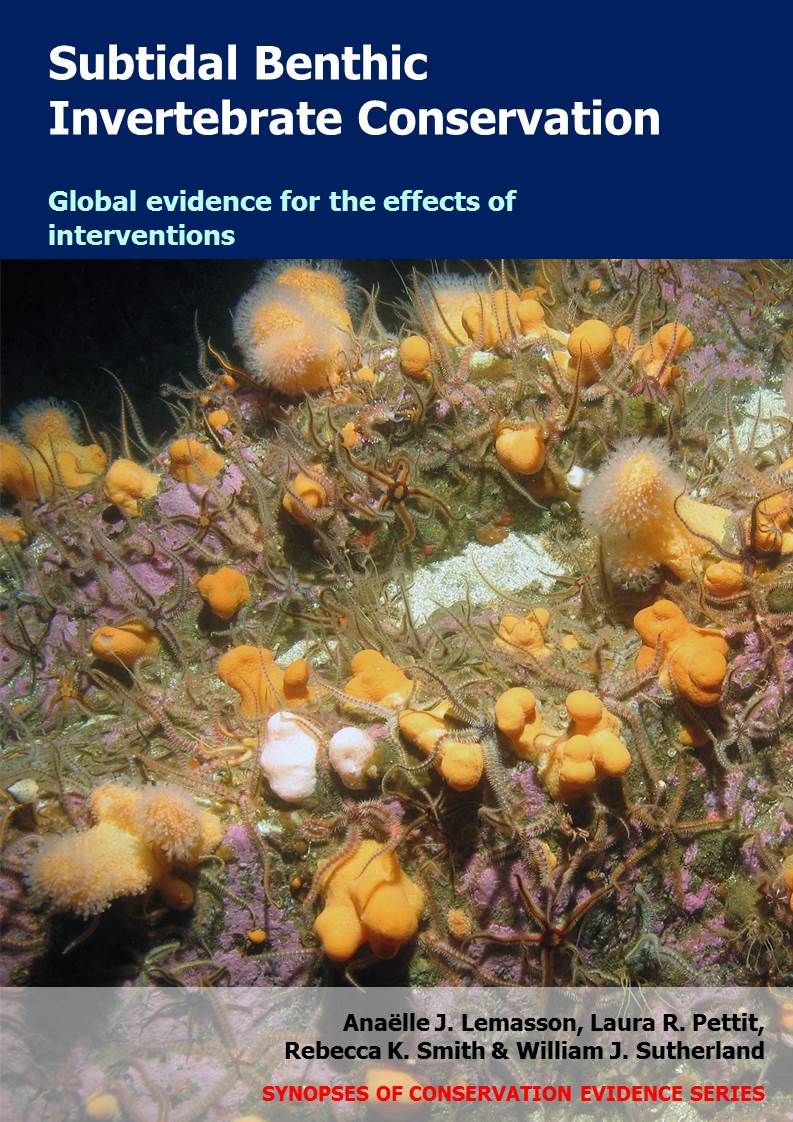Restore biogenic habitats (other methods) - Restore mussel beds
-
Overall effectiveness category Unknown effectiveness (limited evidence)
-
Number of studies: 1
View assessment score
Hide assessment score
How is the evidence assessed?
-
Effectiveness
55% -
Certainty
30% -
Harms
5%
Study locations
Supporting evidence from individual studies
A replicated, controlled study in 2010–2011 of 12 plots in Strangford Lough, Northern Ireland, UK (Fariñas-Franco et al. 2013a – same experimental set-up as Fariñas-Franco et al. 2013b), found that one year after restoring horse mussel Modiolus modiolus habitat by adding scallop shells to the seabed, invertebrate community composition in restored plots was different to that of unrestored plots. Community data were reported as graphical analyses. In addition, while total invertebrate abundance was higher in restored plots (258–830 individuals) compared to unrestored plots (40–58 individuals), species diversity was lower in restored plots (data reported as diversity indices). Species richness was similar across plots (data reported as indices). Within restored plots, there were no differences between plots with elevated scallop shells and plots with flattened shells. In 2010 sixteen tonnes of scallop shells were deployed in bags at four sites (17–19 m depth) to recreate suitable habitat for horse mussel reefs. Each site was divided into an elevated plot (8 m2; shell rising 1 m above seabed) and a flattened plot (4 m2; 0.5 m above seabed). After 12 months, one quadrat (0.25 × 0.25 m) was deployed at each plot and at four adjacent unrestored plots. Sediment and shell were sampled for each quadrat to 10 cm depth. Organisms (>1 mm) were identified and recorded as either counts or presence/absence.
A replicated, controlled study in 2010–2011 of multiple plots in Strangford Lough, Northern Ireland, UK (Fariñas-Franco et al. 2013b – same experimental set-up as Fariñas-Franco et al. 2013a), found that one year after restoring horse mussel Modiolus modiolus biogenic habitat by adding scallop shells to the seabed and translocating horse mussels, overall invertebrate community composition in plots restored with shells and mussels was different to plots restored without mussels (shells only) and both were different to unrestored plots. Community data were presented as graphical analyses. In addition, species richness and diversity were higher in restored plots with mussels and shells compared to plots with shells only (data reported as indices). When compared with nearby natural horse mussel reefs, restored plots (with shells and mussels) had different community composition, despite having similar species richness and diversity. Within restored plots after a year, there were no differences between plots with elevated scallop shells and plots with flattened shells, apart for translocated mussel mortality which was lower in elevated plots (5%) compared to flattened plots or unrestored plots (19%). In 2010 sixteen tonnes of scallop shells were deployed in bags at four sites (17–19 m depth) to recreate suitable habitat for horse mussel reefs. Each site was divided into an elevated plot (8 m2; shell rising 1 m above seabed) and a flattened plot (4 m2; 0.5 m above seabed). Each plot was then sub-divided, and divers translocated live adult horse mussels from nearby natural mussel patches within the Lough into on half of each plot (500 mussels/subplot). After 12 months, one quadrat (0.25 × 0.25 m) was deployed at each subplot and at four adjacent unrestored plots. Sediment and shell were sampled for each quadrat to 10 cm depth. Organisms (>1 mm) were identified and recorded as either counts or presence/absence. Natural horse mussel communities from two nearby horse mussel reefs within the Lough were sampled in December 2010 using the same sampling methodology.
Study and other actions tested
Where has this evidence come from?
List of journals searched by synopsis
All the journals searched for all synopses
This Action forms part of the Action Synopsis:
Subtidal Benthic Invertebrate Conservation





)_2023.JPG)














